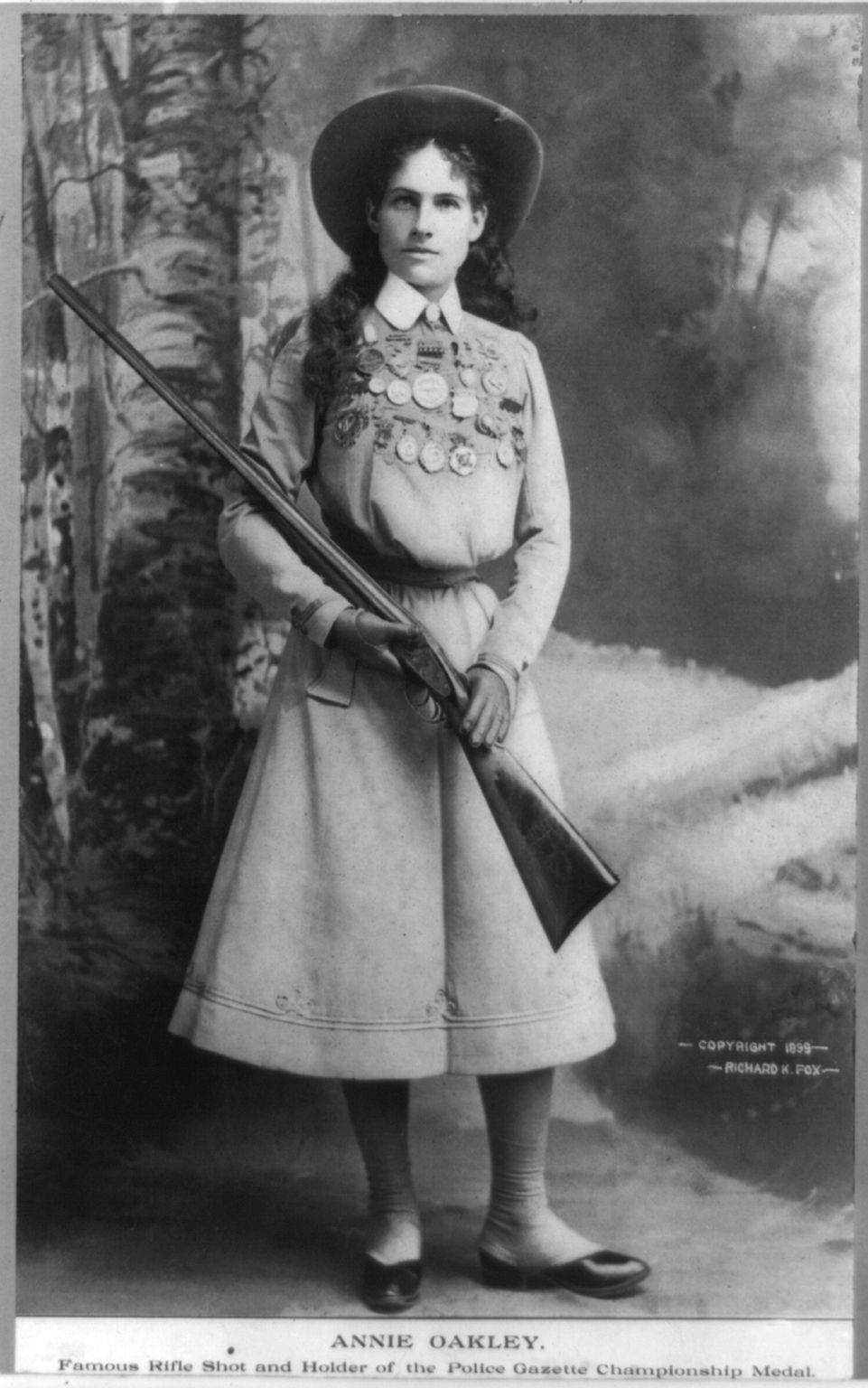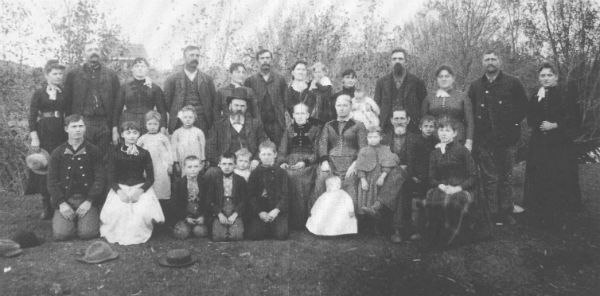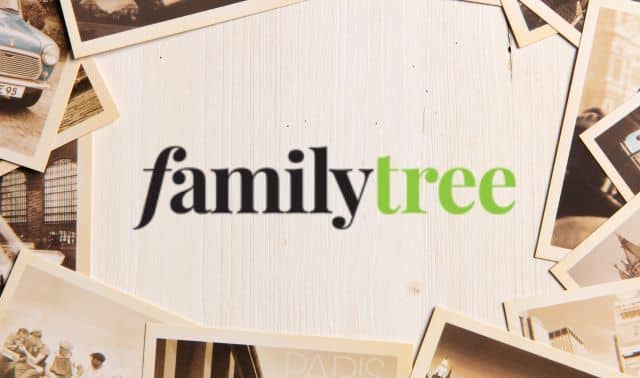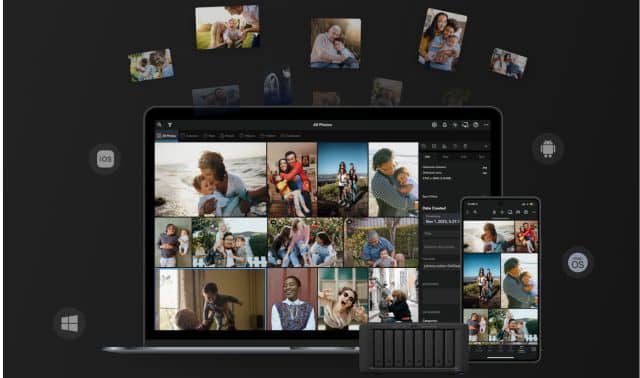Sign up for the Family Tree Newsletter Plus, you’ll receive our 10 Essential Genealogy Research Forms PDF as a special thank you!
Get Your Free Genealogy Forms
"*" indicates required fields
What does Annie Oakley have to do with your family photos? More than you think.
Larry Calhoun sent a group portrait he thinks was taken in western North Carolina. It could be members of the Calhoun or Benfield family. I took one look and said, “Whoa, that woman on the left is showing her ankles.”
Take a good look and you’ll see what I mean. Yes, that’s a short skirt and boots.
It’s an unexpected link between Annie and this mysterious family group. This young woman may have had an idol and I don’t mean the Kardashians. Annie Oakley. She was America’s darling and a media superstar long before America’s Got Talent.
A Radical Woman
In an era when oversize bustles and tight corsets hampered women’s movements, Annie stood out as a symbol of a different life. Her short dresses and demurely covered legs as well as her role as a sharpshooter appealed to many women. By performing in public, she lived a nineteenth century man’s life in women’s clothing. She was considered talented and feminine. For the most part, frontier women in the backwoods, mid-west and western United States labored in heavy skirts, but Annie had freedom to run on stage and exhibit her shooting skills.
Born in 1860 to a Quaker family, she lost her father as a child. Her mother lacked financial resources so Annie was sent to be a servant with another family. One that turned out to be abusive. At 15, her shooting skills brought her fame.
An Arresting Appearance
Annie made her own clothes. Instead of long skirts, she designed shorter styles and often wore them with tights to cover her legs. It reflected lady-like modesty. She managed to be revolutionary without calling attention to that fact.
Calf length skirts could brand a woman as a rebel. Reformers seeking the vote like Amelia Bloomer adopted full pantaloons named for her. Health advocates sought to improve women’s health through dress reforms to allow exercise. Shorter skirts worn with a type of pant gave women like Civil War doctor Mary Walker the ability to do their job unencumbered by yards of fabric. The same was true for mill workers who didn’t want to risk death getting their skirts caught in the machinery. Yet this type of attire was radical and dangerous. A woman could be arrested for dressing “male.”
Frontier Women in Your Family
Instead Annie earned the admiration of both men and women who called her “Little Sure Shot.” Her exploits appeared in newspapers and her appearance likely encouraged young women to don her clothing style. She advocated that women should learn to shoot. She taught more than fifteen thousand to do so. There is no doubt that the diminutive five foot tall Annie (and other female frontier heroes) inspired women to pose for photographs holding guns and to participate in shooting matches. She lived until 1926, an era where most women wore skirts above the ankles.
Calhoun’s “Annie”
The next time you see an old photo of a woman standing with a rifle, think of Annie. This young woman doesn’t have a rifle, but she’s wearing and Annie styled skirt. There is no clue in this picture that this woman could shoot. It’s clear that she’s not a child. While young girls could wear calf-length skirts, once they were older teens a floor length skirt was required for modesty.
We can’t know for sure if Annie inspired this young woman’s attire, but it’s unlikely that she never heard of her. Annie traveled the country with Buffalo Bill’s Wild West Show.
If you want to search for more photos of frontier women check out the digital collection in the Western History Collection of the Denver Public Library.
I’ll be back next week to tell you about the clues that date this picture and how Larry can begin to find out who’s who. In the meantime, sort through your family pictures and see if you have a young “Annie” look-alike in your photo albums. You can send them to me by using the “How to Submit Your Photo” link.
Identify your old mystery family photos with these guides by Maureen A. Taylor:
ADVERTISEMENT







